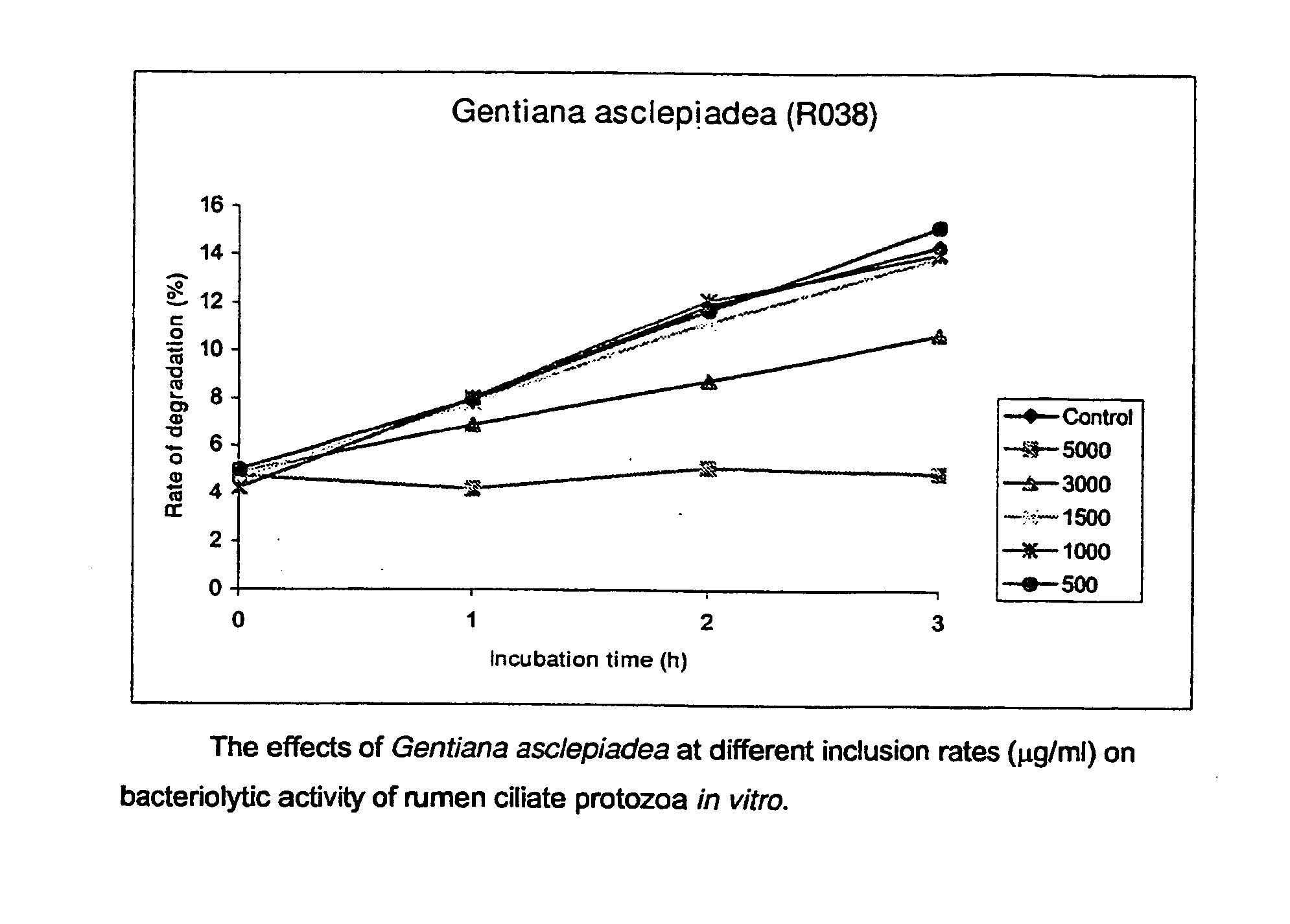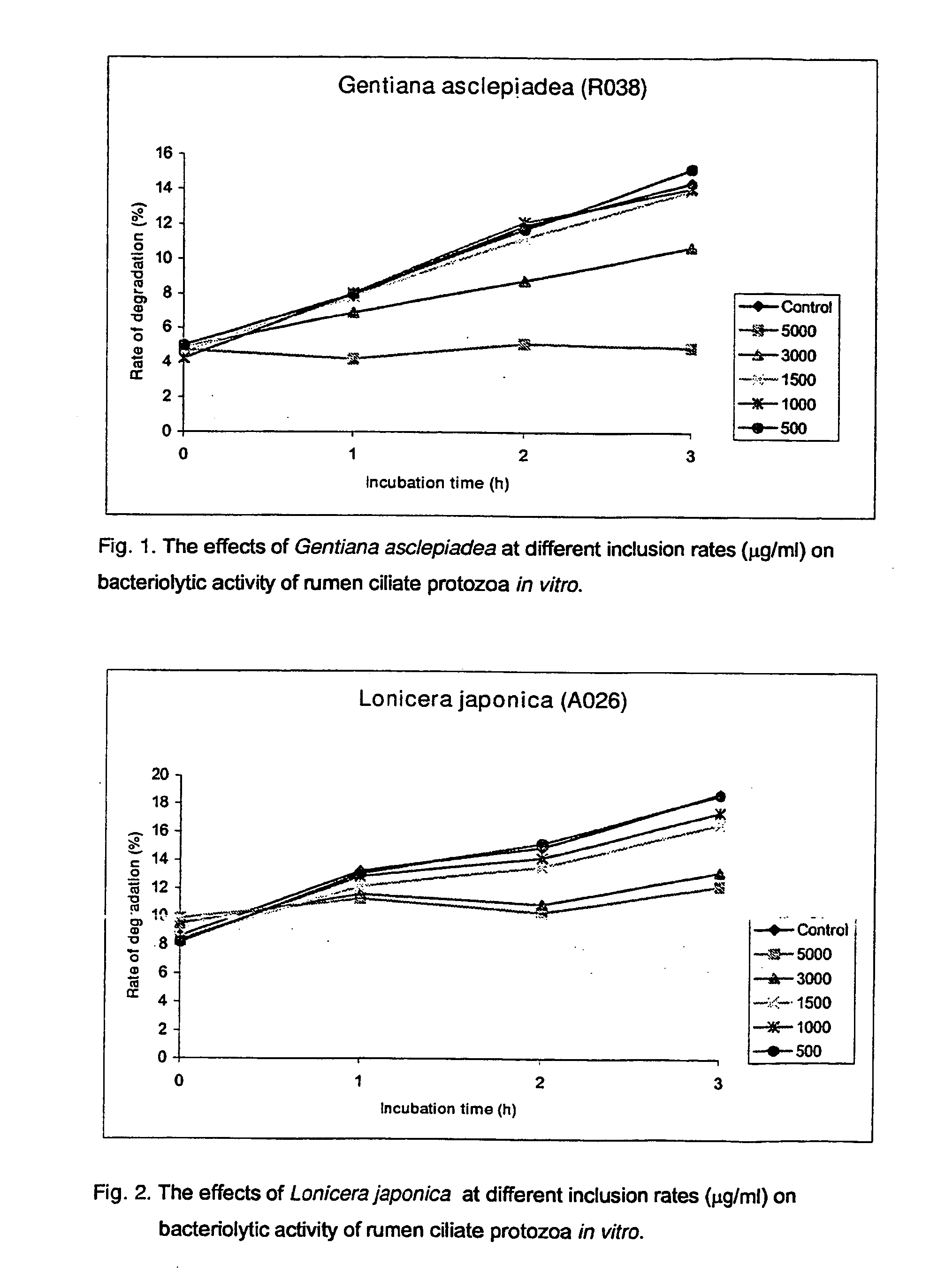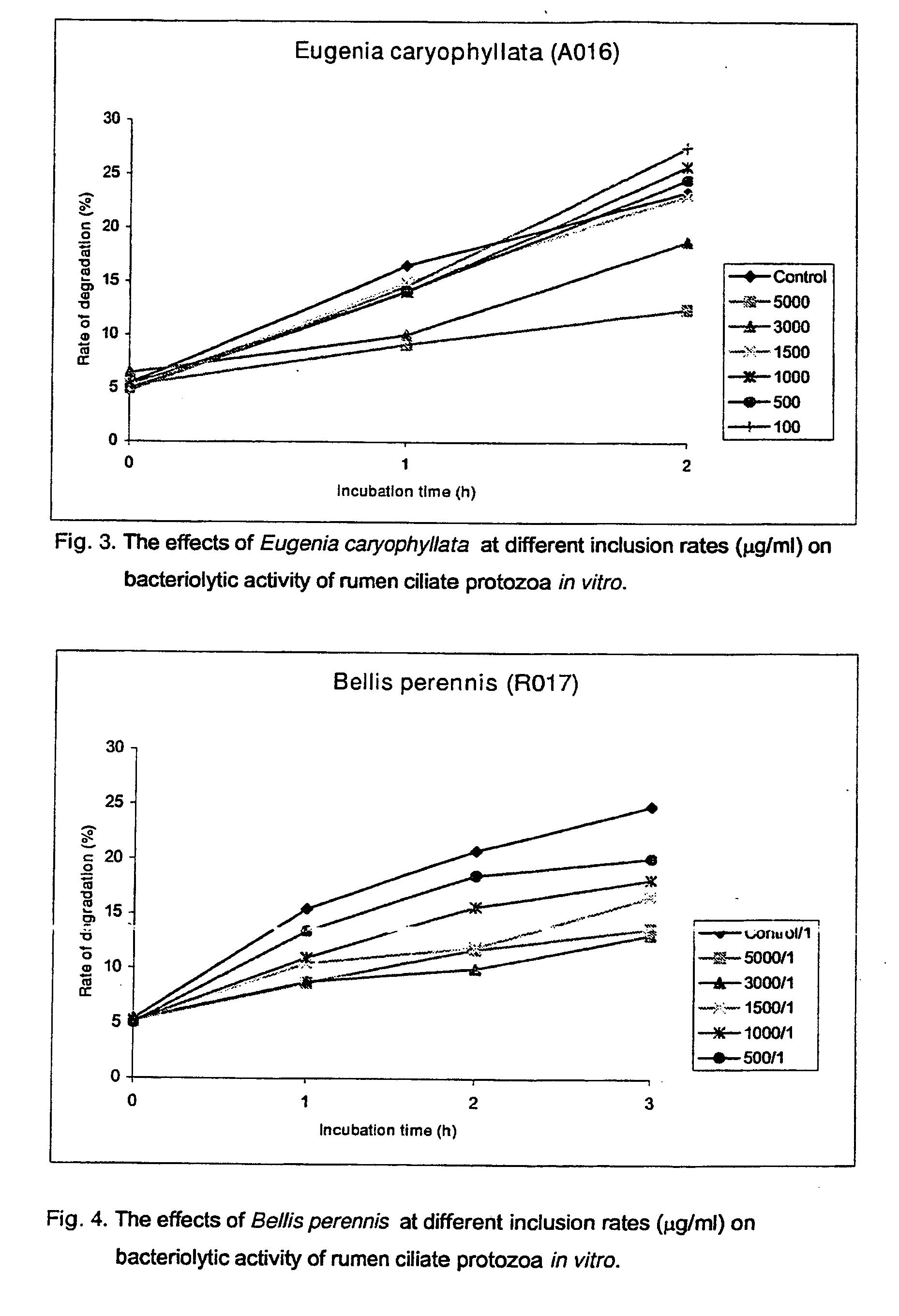Use Of Plants, Plant Extracts And Nature-Identical Components From Plants To Affect The Rumen Fermentation And To Improve The Energy And Protein Retention Of Ruminants
a technology of nature-identical components and plants, which is applied in the direction of plant/algae/fungi/lichens, biocide, plant/algae/fungi/lichens ingredients, etc., can solve the problems of reducing the utilization rate of dietary protein by ruminants, reducing the utilization rate of dietary protein, and reducing the breakdown of dietary protein by ruminants. , to achieve the effect of limiting methanogenesis, promoting
- Summary
- Abstract
- Description
- Claims
- Application Information
AI Technical Summary
Benefits of technology
Problems solved by technology
Method used
Image
Examples
examples
[0038] In the present Examples a number of tests were performed with samples of plant materials, extracts of plant materials and an essential-oil compound. The samples of plant materials were freeze-dried and ground and passed through a 1 mm screen. The samples were as follows.
SampleNo.Botanic nameDescription of the sample1Arctostaphylos uva-ursiLeaves and stem2Bellis perennisPlant, mainly leaves3Carduus pycnocephalusMixture of stems, leaves andflowers4Epilobium montanumFoliage5Eugenia caryophyllataDried embro seed6Gentiana asclepideaPreparation of leaf and stem7Helianthemum canumLeaves and flowers8Knautia arvensisField scabious, all overground9Latuca sativaGarden lettuce, wholeoverground10Lonicera japonicaLeaves, stems and flowers11Lonicera japonica (flower)Extract of flowers12Lonicera japonica + MagnoliasDried leaves and flowers13β-MyrceneEssential oil compound14Olea europaeaDried leaves15Paeoniae alba radixRoot16Peltiphyllum peltatumWhole overground17Populus tremulaPreparation ...
PUM
 Login to View More
Login to View More Abstract
Description
Claims
Application Information
 Login to View More
Login to View More - R&D
- Intellectual Property
- Life Sciences
- Materials
- Tech Scout
- Unparalleled Data Quality
- Higher Quality Content
- 60% Fewer Hallucinations
Browse by: Latest US Patents, China's latest patents, Technical Efficacy Thesaurus, Application Domain, Technology Topic, Popular Technical Reports.
© 2025 PatSnap. All rights reserved.Legal|Privacy policy|Modern Slavery Act Transparency Statement|Sitemap|About US| Contact US: help@patsnap.com



